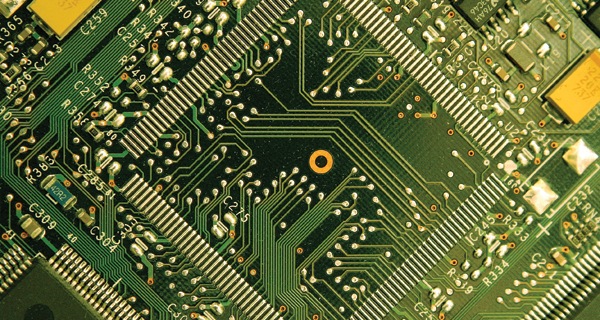ICT: a strategic summary
The Government’s ICT strategy promises large savings but got off to an unpromising start, Peter Cheney reports.
While branded as a ‘smarter’ plan for how government uses its computer networks, the UK Government’s new ICT strategy itself succumbed to that most ordinary and low-tech of journalistic devices: the leak.
A draft of the report was passed to the Conservatives, who duly published it on 1 December. The actual strategy was published on 27 January and covers the whole UK public sector, including the devolved administrations.
Cabinet Office Minister Angela Smith’s foreword describes the march of technological progress from 1885 when the Civil Service bought its first typewriter. Back then, there was “stiff resistance from in-house calligraphers” but today modern life “runs on technology, and government is no different.”
As well as highlighting the need for savings – £3.2 billion each year from a £16 billion total budget – she also warns of ICT’s environmental cost with its global carbon emissions equaling those of airlines.
This follows on from the five-year ‘Transformational Government’ strategy, published in October 2005 and comes at a time when there is a “more pressing” economic need to keep transforming public services through ICT. 2020 is the end-date for the new document.
Around one in 20 people are now employed in the UK’s ICT sector and the public sector is the largest employer of IT professionals. Technology also boosts productivity with each ICT job adding £81,400 to the economy.
Plenty of solutions are now available, it explains, but they are frequently duplicated across government. A process of “standardisation and simplification” is therefore needed.
The strategy’s 14 strands are categorised under three broad headings: common infrastructure; common standards; and common capability
Infrastructure
A “secure and flexible” telecoms infrastructure would be made available across the public sector, based on a public sector network (PSN). Voice and data communications would be converged. The core services are to be in place by the end of 2010. The whole Government Secure Intranet (GSi) family would migrate to the PSN by December 2012.
Secondly, extending the use of cloud computing, the government cloud (G-Cloud) would allow public bodies to select and host ICT services; these would be sourced from multiple suppliers. As a result, there would be a single access point for services, applications and assets, involving a major change in how ICT is procured and supplied.
Importantly, the number of data centres would be reduced from several hundred to between 10 and 12. This consolidation would start in central government and then roll out to other public bodies. Overall energy costs are estimated to go down by 75 per cent per year.
A government application store (G-AS) is, meanwhile, suggested for sharing and reusing applications. There are currently more than 10,000 applications in use; fresh procurement is currently easier than reuse. By 2020, both G-Cloud and G-AS would also provide shared services.
Public sector organisations had historically managed their own desktop services i.e. email, word processing, spreadsheets and internet browsing. Instead, common desktop designs would be drawn up with suppliers required to provide them at the lowest available price.
Standards
Common standards covering security, interoperability and data are being built into the technical architecture underpinning government ICT. Public sector procurement would also become more flexible, taking up more open source code and software (agendaNi issue 29, page 60) and making it available for re-use elsewhere through the G-Cloud.
Two challenging environmental targets have already been set in the Greening Government ICT strategy: to make government ICT carbon-neutral in the office by 2012; and carbon-neutral across its lifecycle by 2020.
Public worries about standards are highest when data losses take place but data sharing is still important, for joining up and personalising services. A national information assurance strategy was updated in 2007 and was followed up by the data handling review after the HMRC disc data loss. Its results have included the encryption of removable media and mandatory annual training for over 300,000 civil servants.
Capability
Only the people working in public sector ICT can deliver the strategy so the third strand focuses on equipping them for this job. If its own staff can be made more capable, then the public sector can spend less on consultants and contractors; a 50 per cent saving by 2020 is envisaged. The government IT profession’s skills and competency framework is being used to recruit, train and manage staff.
There is a perception that many public sector ICT projects fail. The Cabinet Office works with the Office of Government Commerce to provide ‘reliable project delivery’ and a more structured approach is to be taken.
Around 65 per cent of central government ICT is outsourced to the private sector and the Government wants to improve those relationships; these were described as poor in the 2004 Gershon report. An ICT procurement strategy for government has also been drawn up. The UK public sector also operates in over 145 countries so its ICT activities would aim to comply with relevant international treaties and EU agreements.
Principles
As the title suggests, the strategy is written with three key principles in mind: smarter, cheaper and greener. ‘Smarter’ is interpreted as better design, security, innovation, skills and management. ‘Cheaper’ incorporates standardisation, simplification and reuse, while ‘greener’ speaks for itself.
The Chief Information Officer (CIO) Council developed the strategy and is responsible for making sure it is implemented. Meanwhile, the Chief Technology Officer (CTO) Council would ‘scan the horizon’ for emerging relevant technologies. Both councils’ work is overseen by the Cabinet Office.
Ultimately, it is up to the CIO in each public sector organisation to make sure improvements are made. However, with alternative plans published by the Conservatives and a general election approaching, it is uncertain that the strategy in its current form will be put in practice.
Key points
- Fewer data centres
- Government applications store (G-AS) for sharing and reusing computer programmes
- Government cloud (G-Cloud) for selecting and hosting ICT services from one shared network
- Common desktop designs across the public sector rather than separate desktops per organisation
Annual saving aims
| £3.2 billion | Operational Efficiency Programme: Treasury efficiency plan delivered by ICT (December 2009) |
| At least £500m | Public Sector Network |
| Approx. £500m | Government Applications Store |
| £400m | Common desktops |
| Up to £300m | Consolidating data centres |






